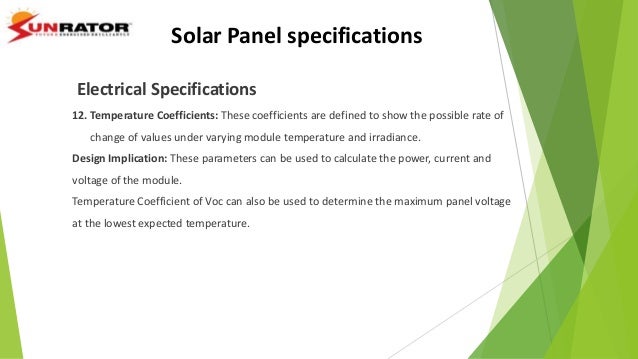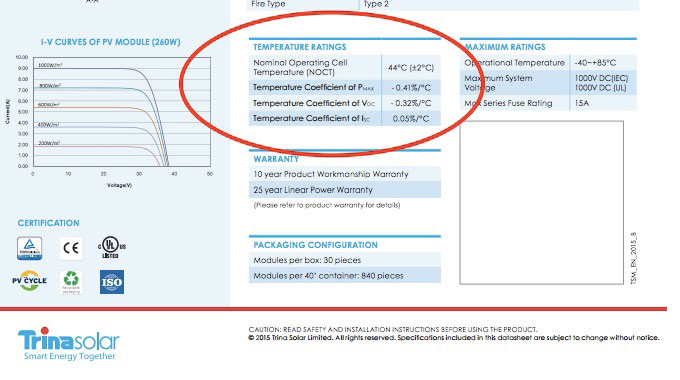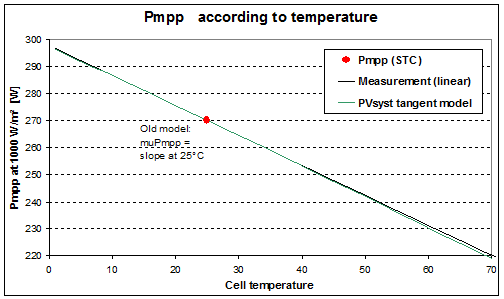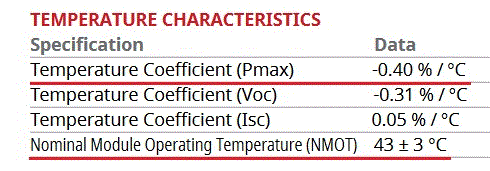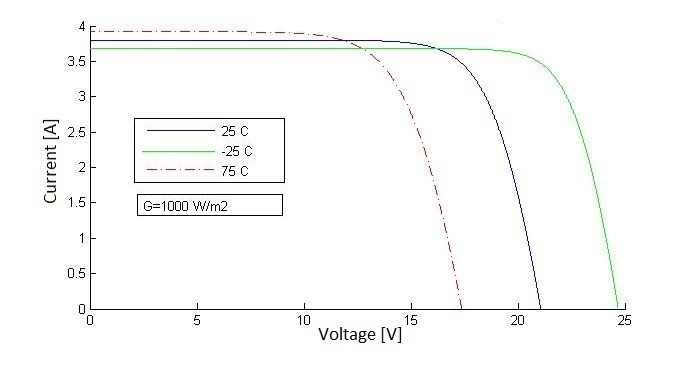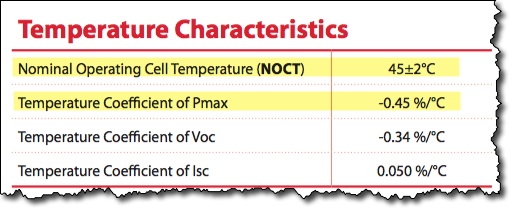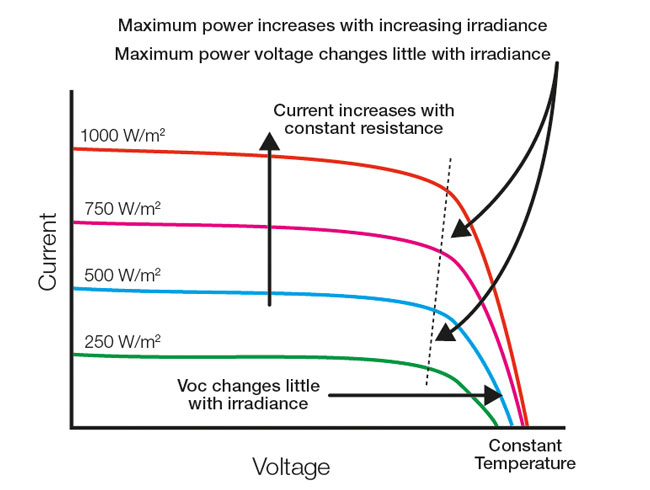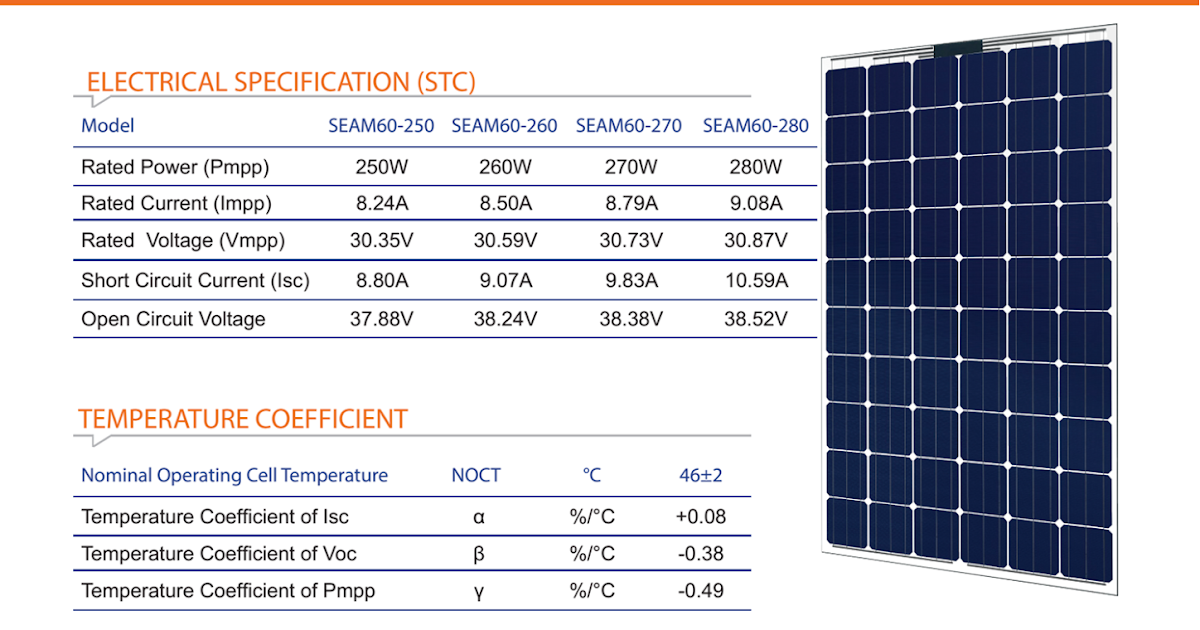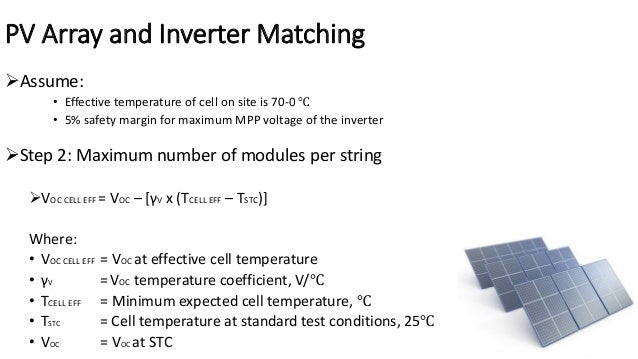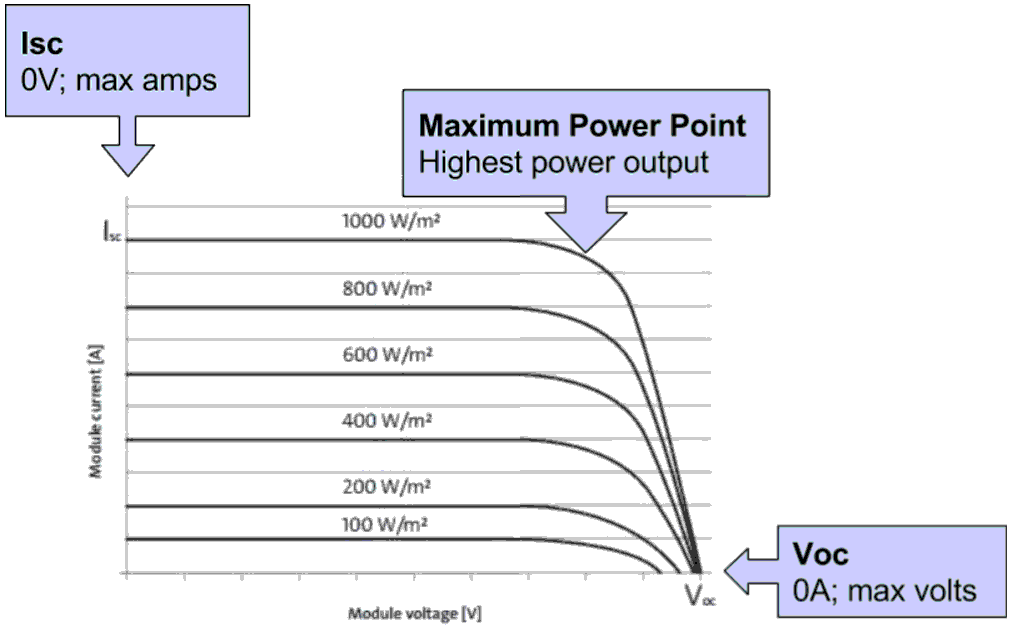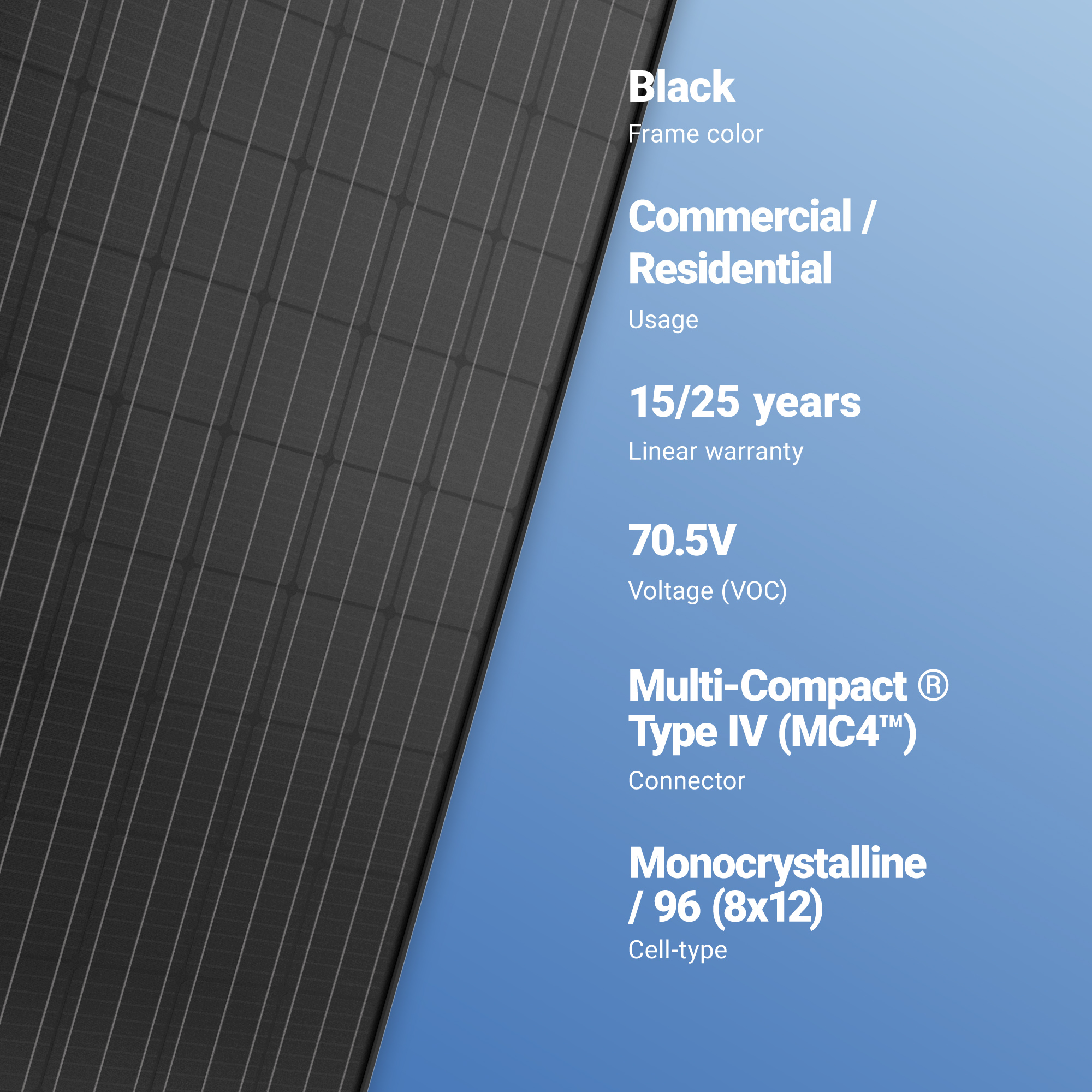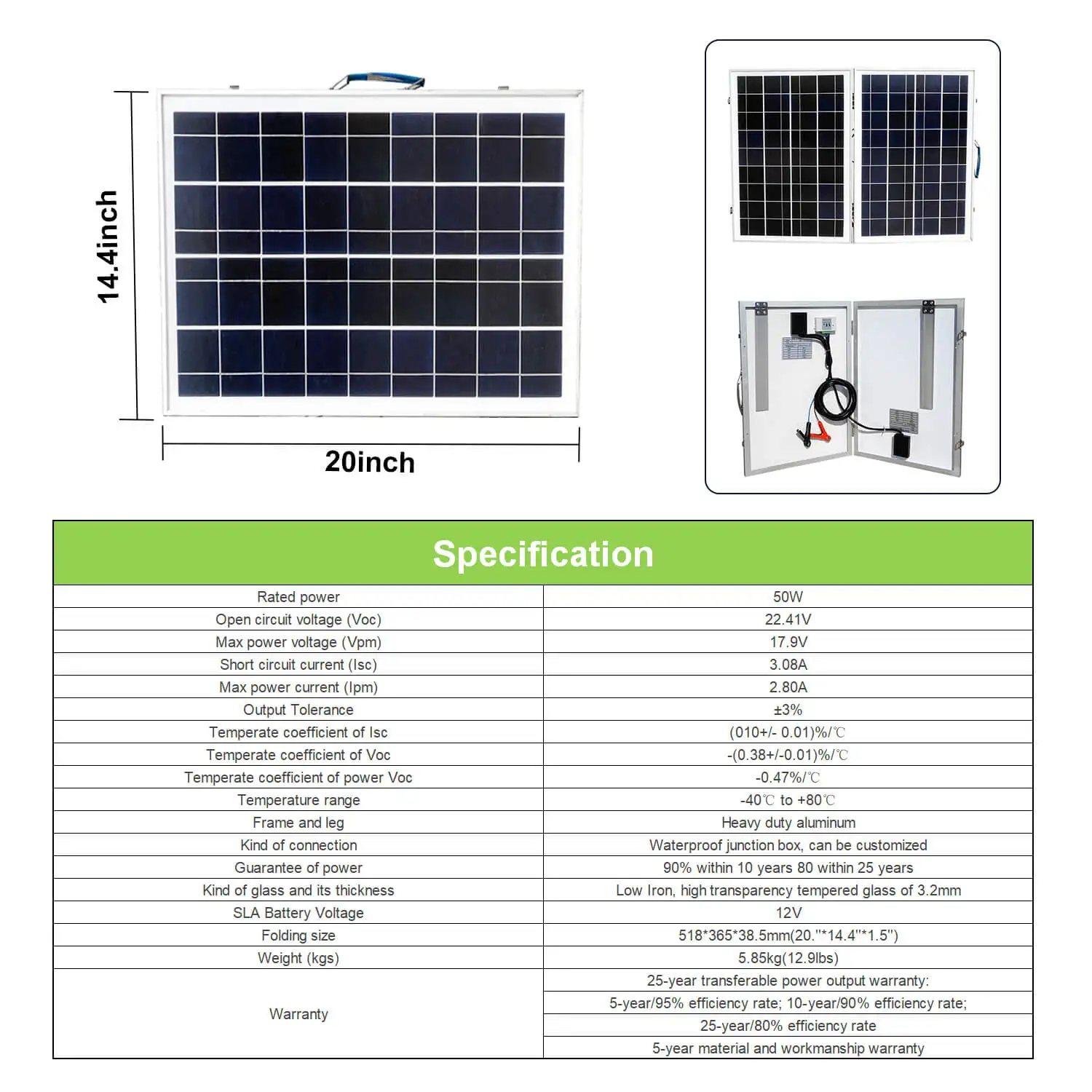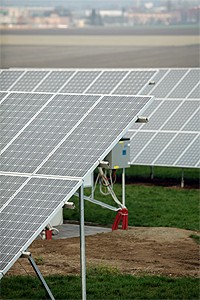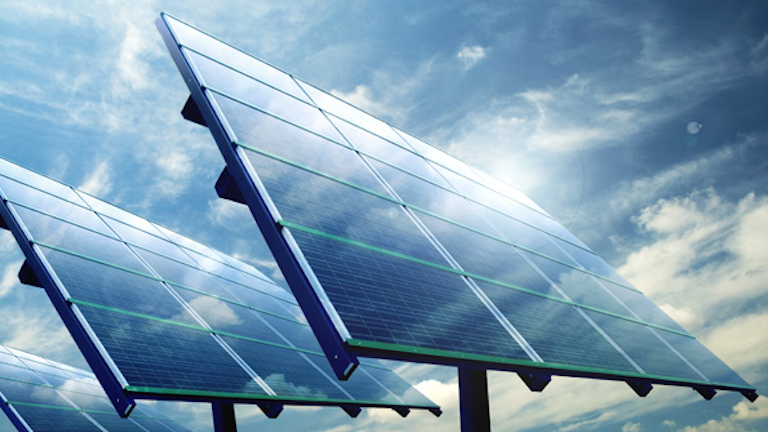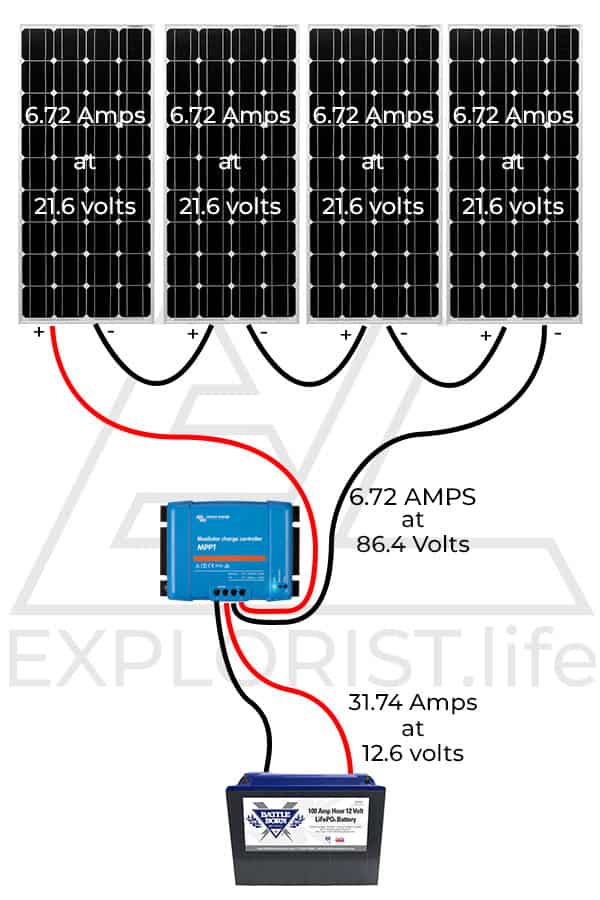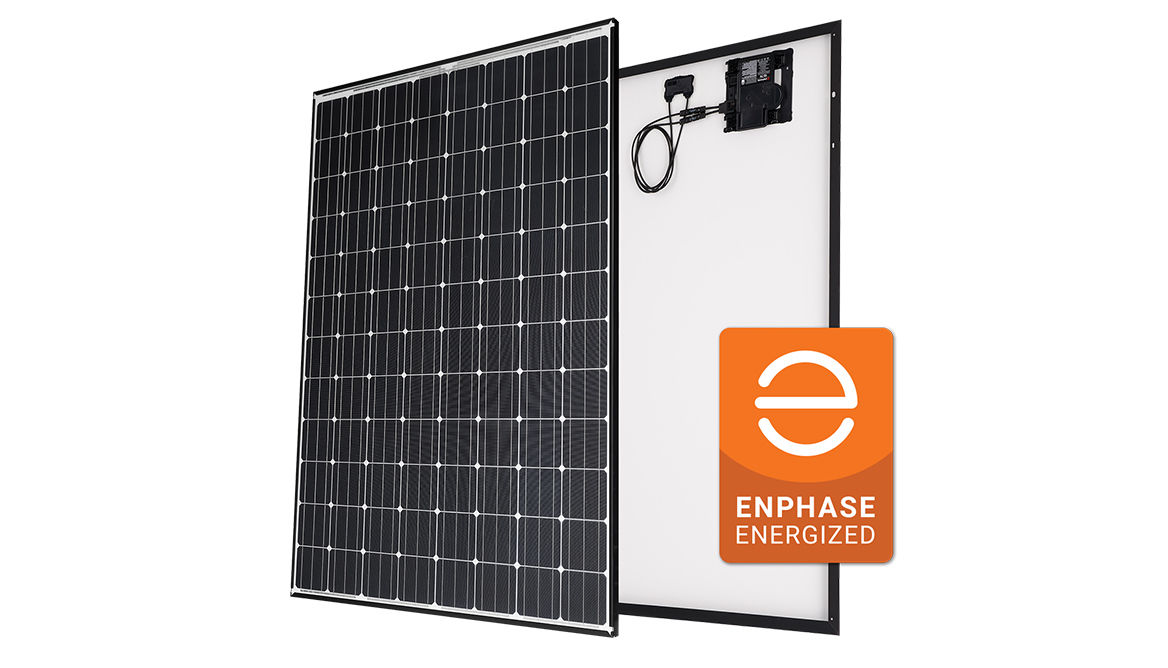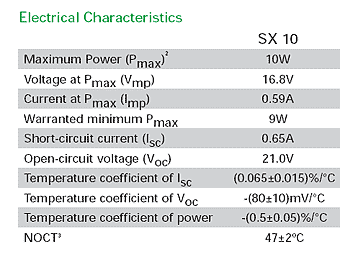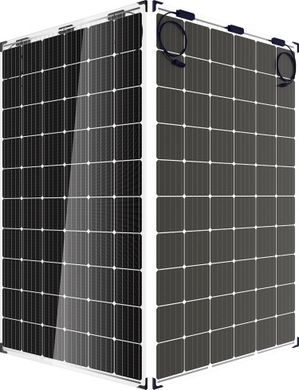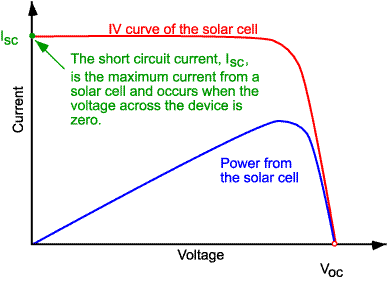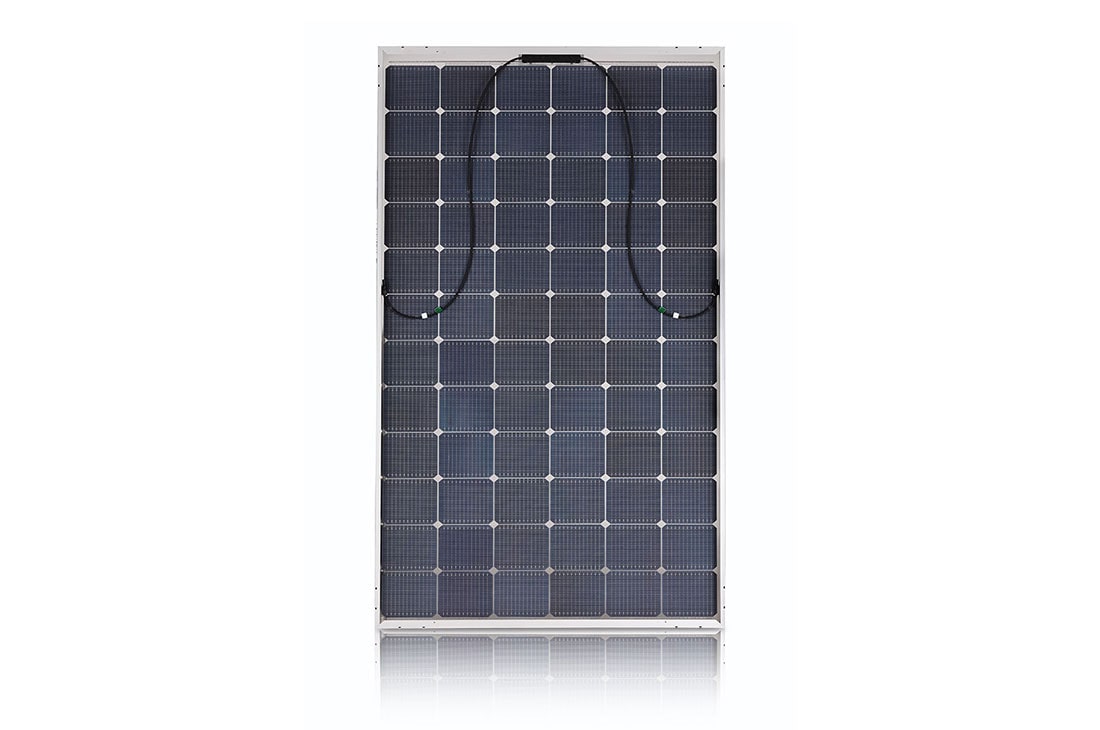The voltage of the system will always be at it s highest in the coldest conditions and the solar panel temperature coefficient of voc is required to work this out.
Solar panel temperature coefficient voc.
The most suitable temperature for solar panels is 25 c which means temperature above or below 25 c will both cause power loss.
Voltage at open circuit voc this is the voltage that is read with a voltmeter or multimeter when the module is not connected to any load.
This article is a basic introduction to the temperature coefficient of a solar module its significance and calculation.
You would expect to see this number listed on a pv module s specification sheet and sticker.
Thin film panels can see temperature coefficients closer to 0 2 c.
The material of your roof can have an impact on the solar panel s temperature.
Open circuit voltage voc 52 5 v 52 9 v.
This means a mono solar panel will lose half of one percent of its power for every degree the temperature rises.
As a solar panel increases in temperature the power output of the solar panel decreases.
Solar panel series spr p19 385 410 com.
Temperature has an effect the efficiency and maximum pv output of a solar panel.
Temperature coefficient of the open circuit voltage voc.
The ambient temperature in aswan egypt at 9 00 am is 5 c.
The open circuit voltage of the solar panel is 47 2 while the voltage temperature coefficient is 0 31 v c.
The effect of temperature on solar panel performance.
Generally monocrystalline solar cells have a temperature coefficient of 0 5 degc.
Temperature coefficient of pmax 0 36 c temperature coefficient of voc.
With mono and poly crystalline solar panels it s always a negative o c figure such as 0 30 o c on the rec twin peak 2 290w solar panels.
What is the maximum open circuit voltage considering the temperature effect.
Thin film solar panels have a lower temperature coefficient than traditional monocrystalline or polycrystalline panels.
The hotter a panel gets the less power it generates the ambient temperature temperature coefficient of the actual panel and the type of installation are all factors that affect the yield potential of a solar power system.
Measuring voltage and solar panel testing.
Certain rooftops absorb more heat than others.
